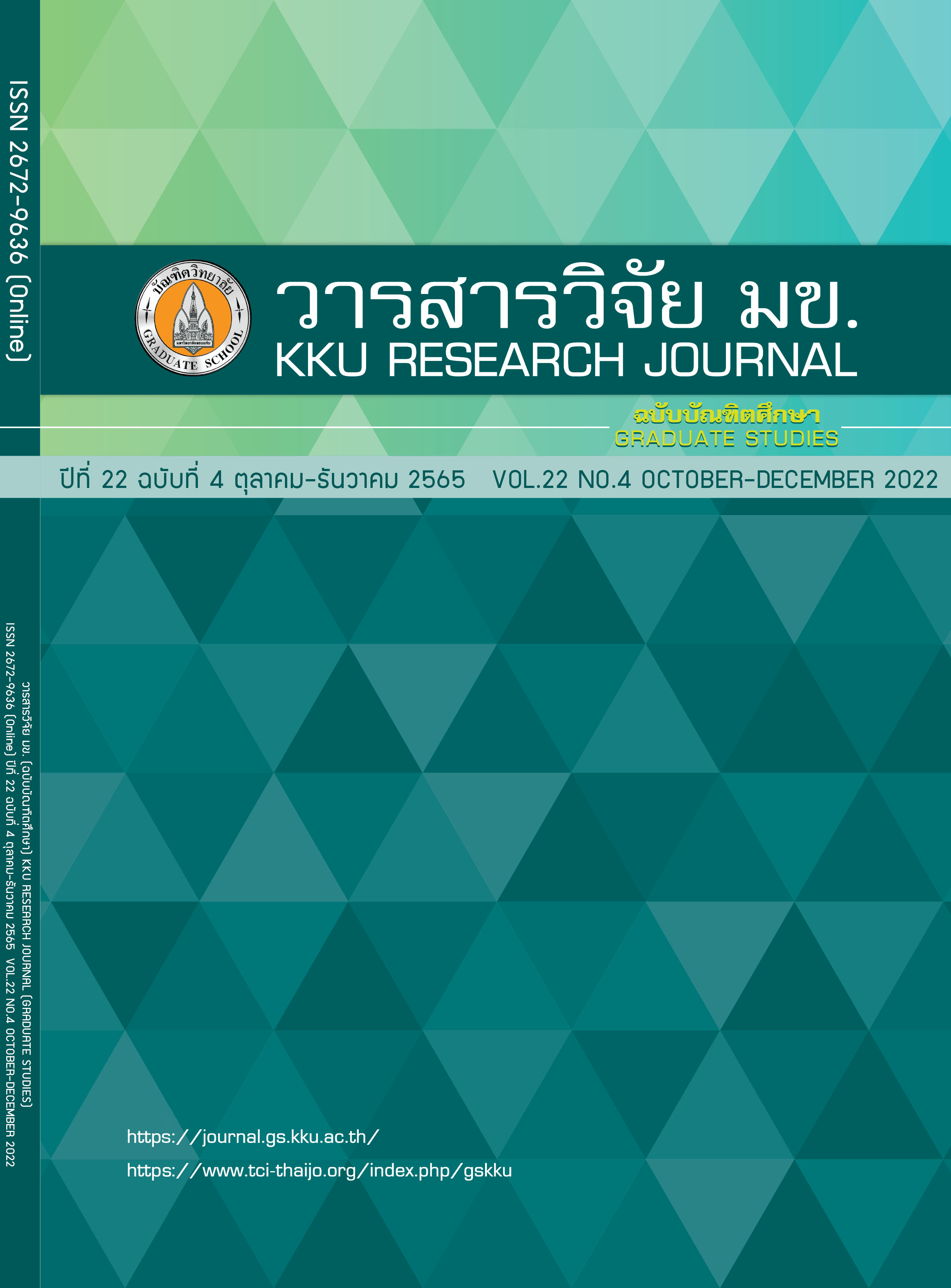First-Principles Study of Electronic Structure and Optical Properties of TiO2
Keywords:
Band gap, Density of state, Optical absorptionAbstract
Titanium dioxide (TiO2) is an efficient photocatalyst material. Titanium dioxide is widely used the photocatalysis process since titanium dioxide is non-toxic. It has stable chemical properties and has a band gap 2.00-3.20 eV in the UV and VB ranges. In this work, the first-principles calculation based on the density functional theory was used. The stable structure electronic structure and optical properties of TiO2 (Rutile, Anatase and Brookite) were studied by using three exchange-correlation Exc LDA, GGA, and MGGA obtained 2.83, 3.10 and 2.93 eV, respectively. It was found that the MGGA provide the band gap calculated value very closed to the experiment results. Density of state of the electrons mostly become from the contributed of Ti-d and O-p atoms. The absorption effect occurs in the wavelength range of 250-450 nm, which the UV range.
References
Rahimi N, Pax RA, Gray EM. Review of functional titanium oxides. I: TiO2 and its modifications. Progress in Solid State Chemistry, 2016. 44(3): p. 86-105.
Mohamad M, et al. A density functional study of structural, electronic and optical properties of titanium dioxide: Characterization of rutile, anatase and brookite polymorphs. Materials Science in Semiconductor Processing, 2015. 31: p. 405-414.
Su C, et al. Sol–hydrothermal preparation and photocatalysis of titanium dioxide. Thin Solid Films, 2006. 498(1): p. 259-265.
Noman MT, Ashraf M.A., and Ali A. Synthesis and applications of nano-TiO2: a review. Environmental Science and Pollution Research, 2019. 26(4): p. 3262-3291.
Broyden CG. The Convergence of a Class of Double-rank Minimization Algorithms 1. General Considerations. IMA Journal of Applied Mathematics, 1970. 6(1): p. 76-90.
Amtout A, Leonelli R. Optical properties of rutile near its fundamental band gap. Physical Review B, 1995. 51(11): p. 6842-6851.
Tang H, et al. Electrical and optical properties of TiO2 anatase thin films. Journal of Applied Physics, 1994. 75(4): p. 2042-2047.
Evtushenko YM, et al. Optical Properties of TiO2 Thin Films. Physics Procedia, 2015. 73: p. 100-107.
Nam Y, et al. Photocatalytic activity of TiO2 nanoparticles: a theoretical aspect. Journal of Materials Chemistry A, 2019. 7(23): p. 13833-13859.
Hohenberg P, Kohn W. Inhomogeneous Electron Gas. Physical Review, 1964. 136(3B): p. B864-B871.
Kohn W, Sham LJ. Self-Consistent Equations Including Exchange and Correlation Effects. Physical Review, 1965. 140(4A): p. A1133-A1138.
Perdew JP, Wang Y. Accurate and simple analytic representation of the electron-gas correlation energy. Physical Review B, 1992. 45(23): p. 13244-13249.
Perdew JP, Burke K, Ernzerhof M. Generalized Gradient Approximation Made Simple. Physical Review Letters, 1996. 77(18): p. 3865-3868.
Tran F, Blaha P. Accurate Band Gaps of Semiconductors and Insulators with a Semilocal Exchange-Correlation Potential. Physical Review Letters, 2009. 102(22): p. 226401.
Gonze X, et al. ABINIT: First-principles approach to material and nanosystem properties. Computer Physics Communications, 2009. 180(12): p. 2582-2615.
Smidstrup S, et al. First-principles Green's-function method for surface calculations: A pseudopotential localized basis set approach. Physical Review B, 2017. 96(19): p. 195309.
Burdett JK, et al. Structural-electronic relationships in inorganic solids: powder neutron diffraction studies of the rutile and anatase polymorphs of titanium dioxide at 15 and 295 K. Journal of the American Chemical Society, 1987. 109(12): p. 3639-3646.
Titanium oxide (TiO2): crystal structure, lattice parameters and related parameters of anatase: Datasheet from Landolt-Börnstein - Group III Condensed Matter · Volume 41D: "Non-Tetrahedrally Bonded Binary Compounds II" in SpringerMaterials (https://doi.org/10.1007/10681735_160). Springer-Verlag Berlin Heidelberg.
Downloads
Published
Issue
Section
License
Copyright (c) 2022 KKU Research Journal (Graduate Studies)

This work is licensed under a Creative Commons Attribution-NonCommercial-NoDerivatives 4.0 International License.



